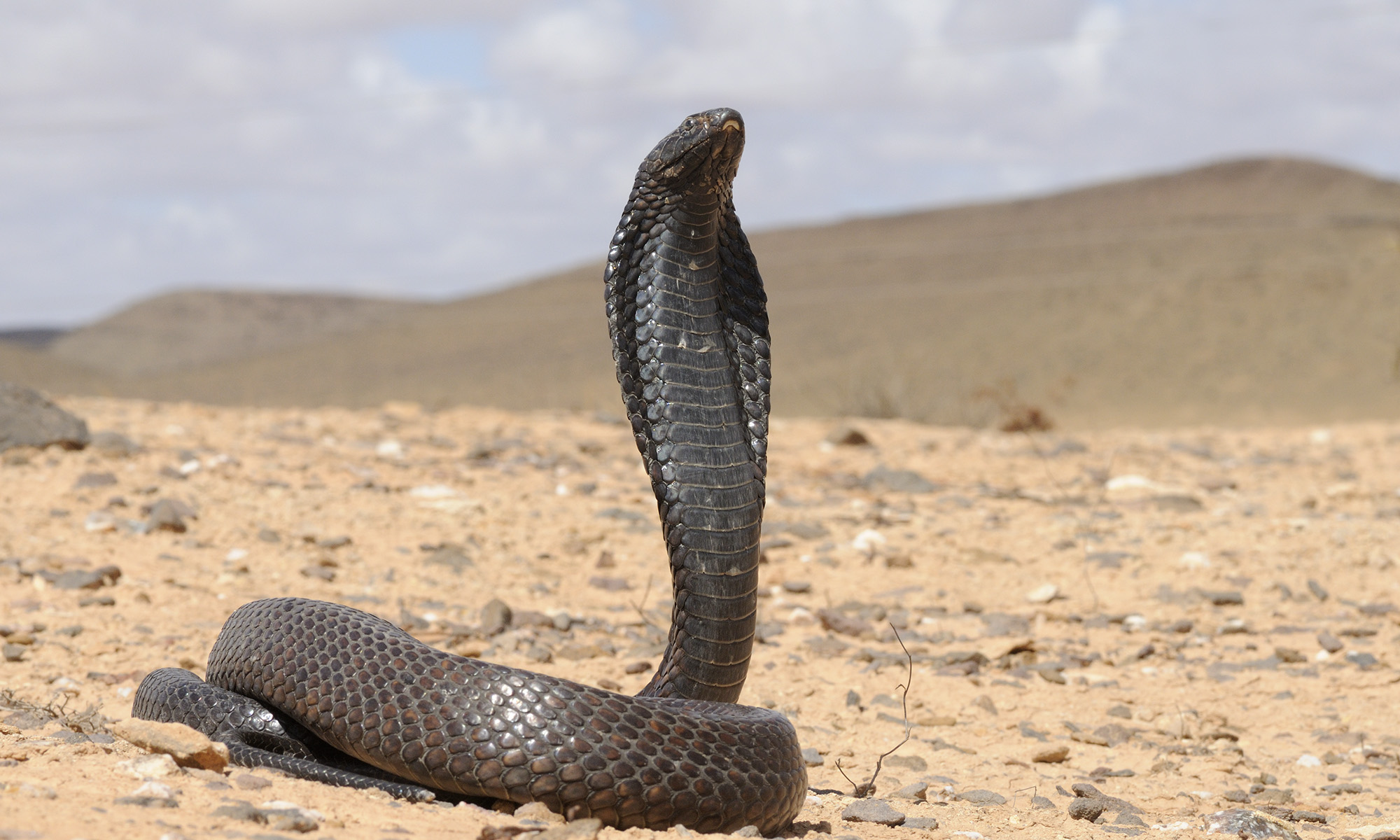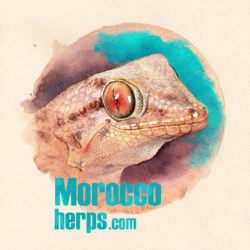Moroccan Painted Frog
Discoglossus scovazzi Camerano, 1878
By Gabriel Martínez del Mármol & David Donaire-Barroso
Updated: 1/11/2020
Taxonomy: Anura | Alytidae | Discoglossus | Discoglossus scovazzi
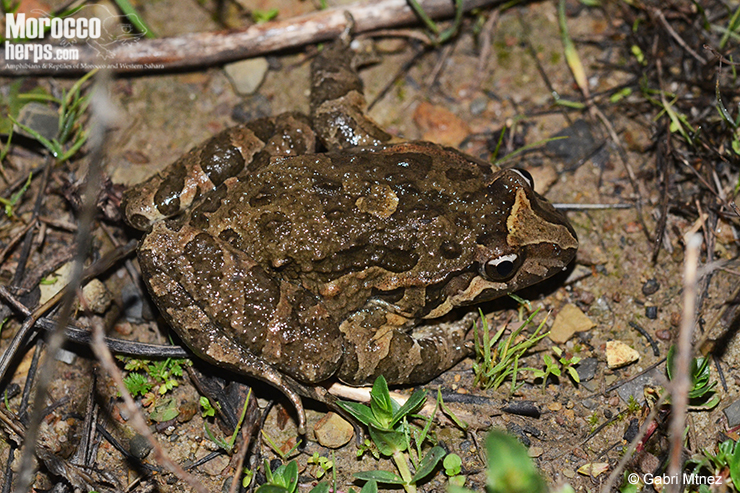
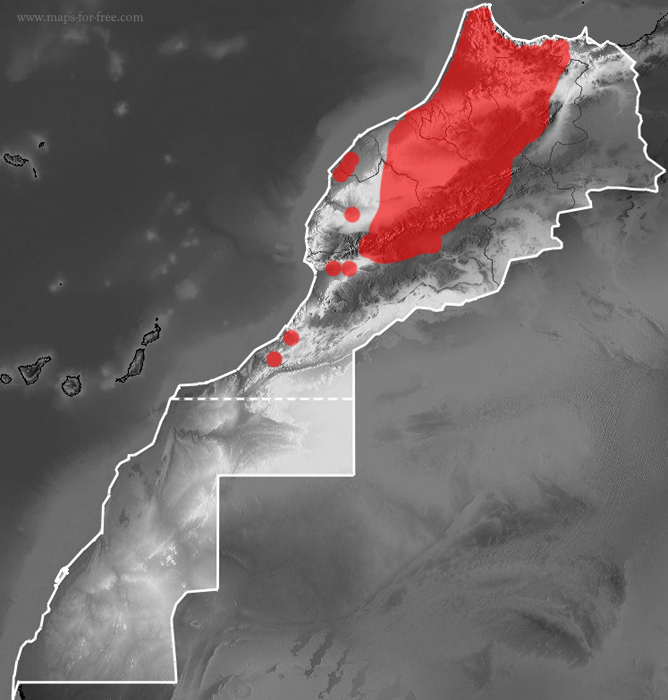
 Discoglossus scovazzi
Discoglossus scovazzi
Distribution map of Discoglossus scovazzi in Morocco.
1) Phylogenetic frame
This Moroccan endemic species was considered a synonymy or subspecies of D. pictus (Boulenger, 1891; Lanza et al., 1986). However phylogenetic analysis showed that Discoglossus scovazzi must be considered a full species that is more related to Discoglossus galganoi/jeanneae (Iberian species) than to D. pictus (Martínez-Solano 2004; Biton et al., 2013).
2) Description
The Moroccan painted frog is a medium sized amphibian with usually a snout-vent-length less than six cm, characterized by a smooth skin, small elongate warts, pointed snout and a characteristic pupil with an inverse drop shape.
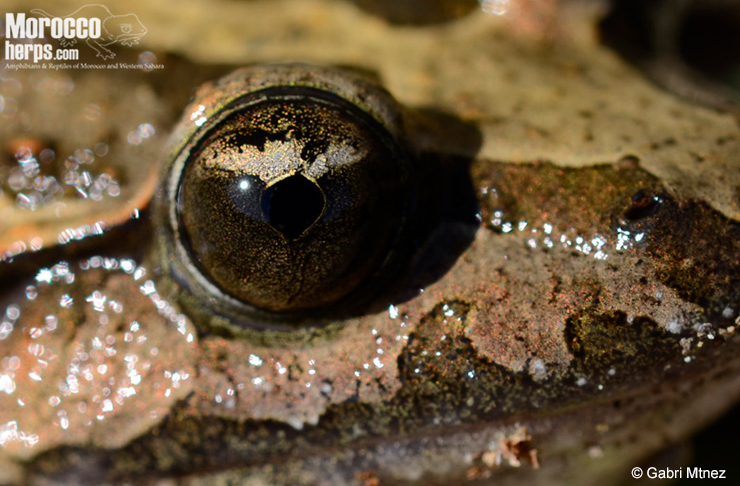
These frogs have a high variability of colour patterns within the same population with uniform, striped or spotted designs (Beukema et al., 2013). Basic coloration is cream and the striped or spotted phenotypes are characterized by darker stripes or rounded marks.
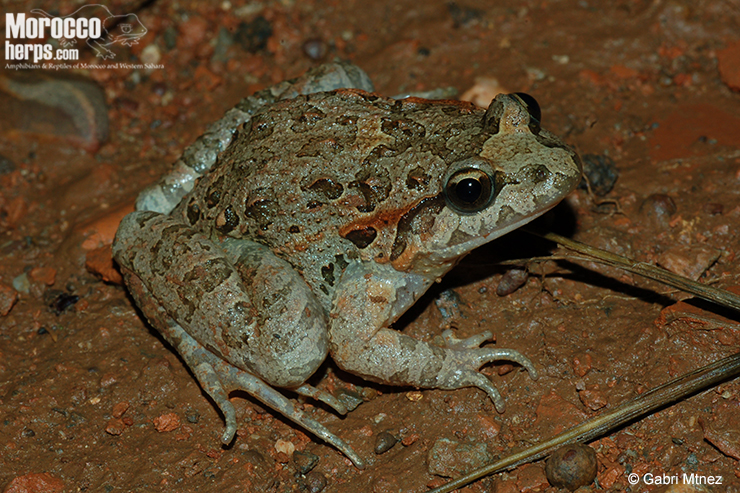
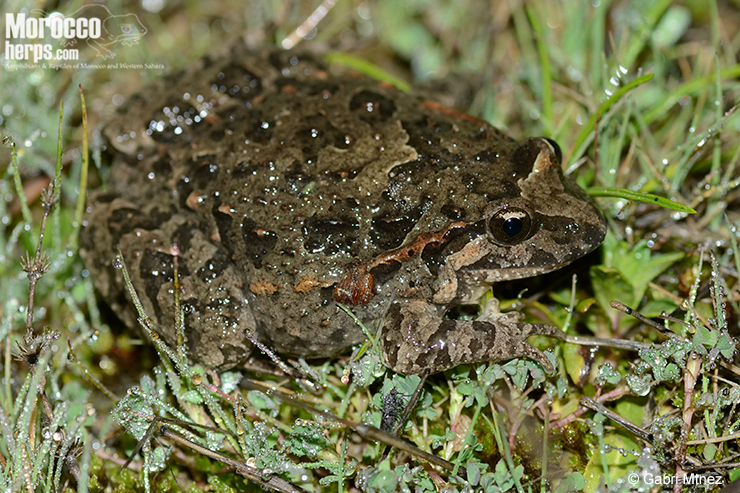
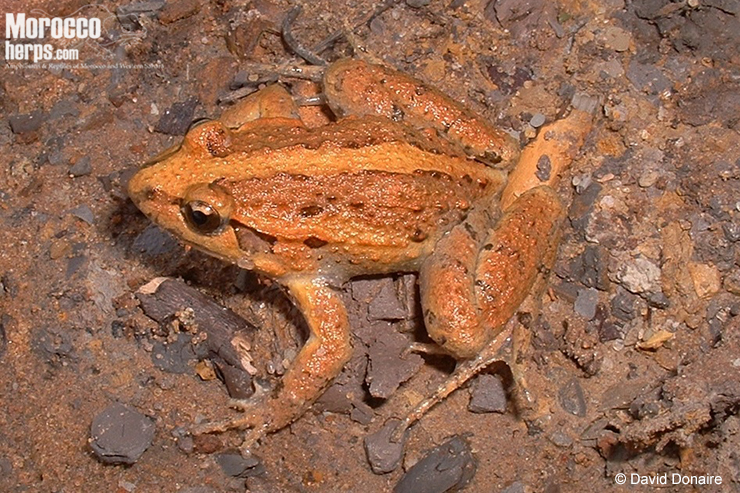
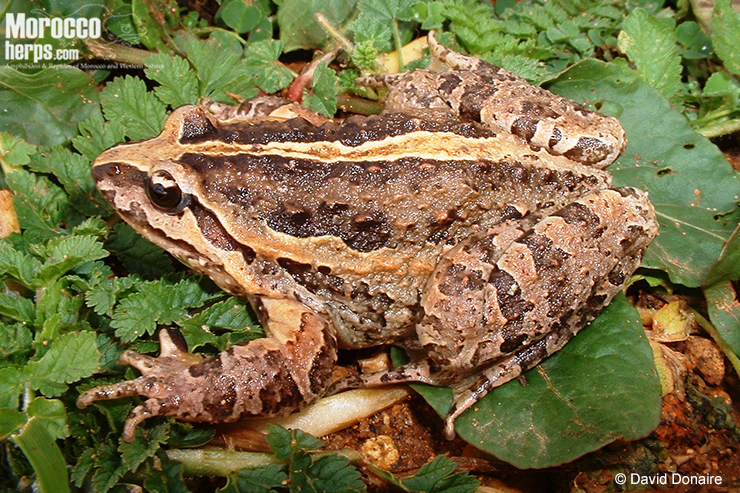
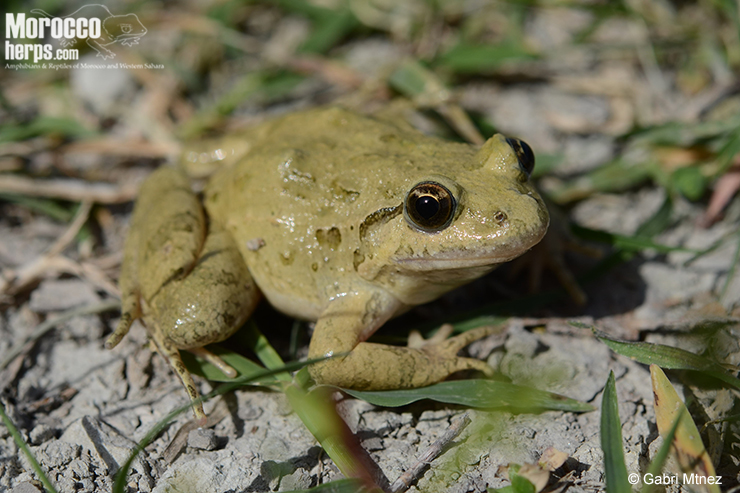
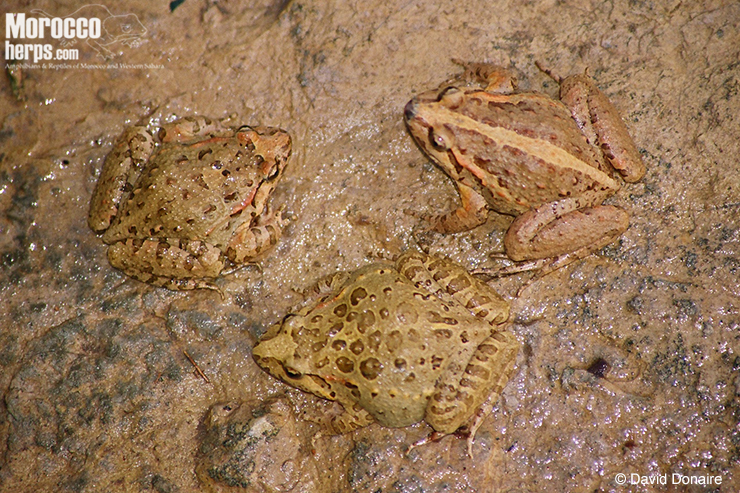
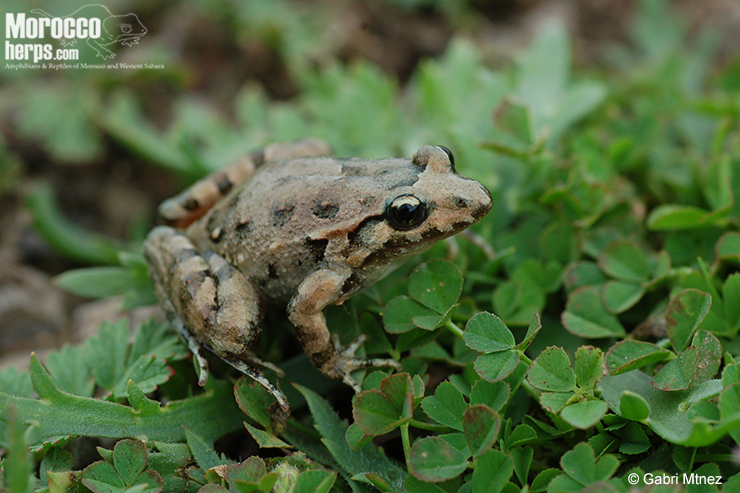
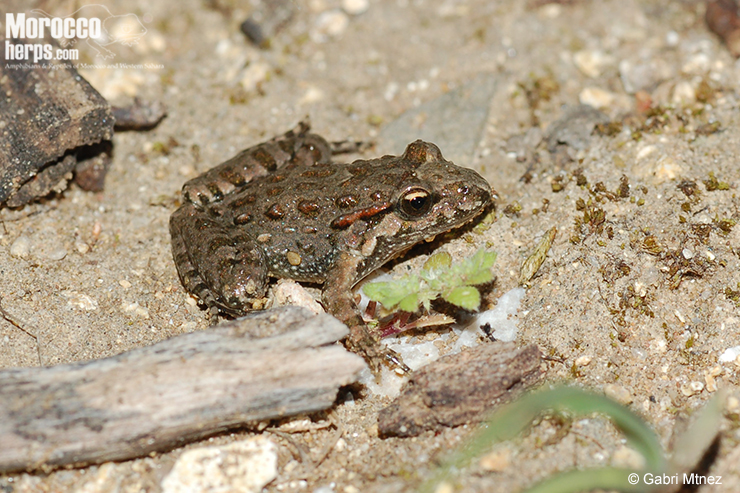
There are no morphological features to distinguish it from D. pictus (Martínez del Mármol et al., 2019) although in large specimens the head shape seems broader in D. pictus (personal subjective observation, D. Donaire). Apart from D. pictus it could be confused with Pelophylax saharicus for the inexpert eye, but one of the main ways to differentiate them is the tympanum, which is noticeable in P. saharicus and indistinc in D. scovazzi. Also, very evident, are the two glandular folds along the dorsal sides of P. saharicus, while this fold is only present on the head and sides of the neck in D. scovazzi.
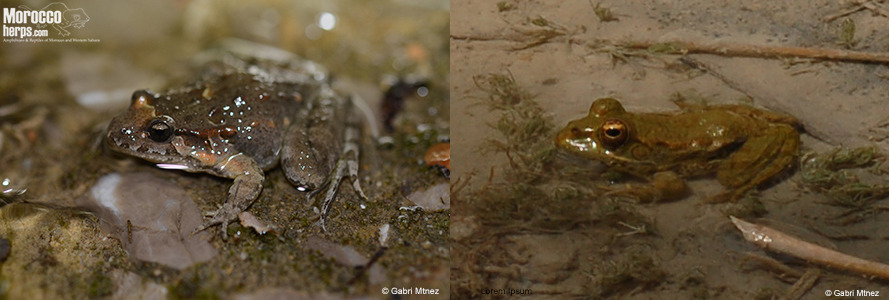
3) Ecology and habits
This is mainly a nocturnal species that can be sometimes found during daytime, usually around wetlands. Adults can be found active on the surface mostly during rainy periods between September and May, and probably aestivate in the driest and hottest months of the year.
According to Beukema and collaborators (2013) it is one of the first amphibians to reproduce in Morocco. The mating season begins with the winter rains, resulting in tadpoles in October-February and juveniles seen in June. We have also seen juveniles in Kenitra at the end of August (pers. obs.). All the observations suggest that this species can breed during almost the whole year as has been described by Schleich and collaborators (1996) similar to D. pictus (Escoriza, 2015). The amplexus is inguinal and the males develop nuptial callosities during the mating season. Females lay a maximum of 1.000 eggs (Salvador et al., 2008).
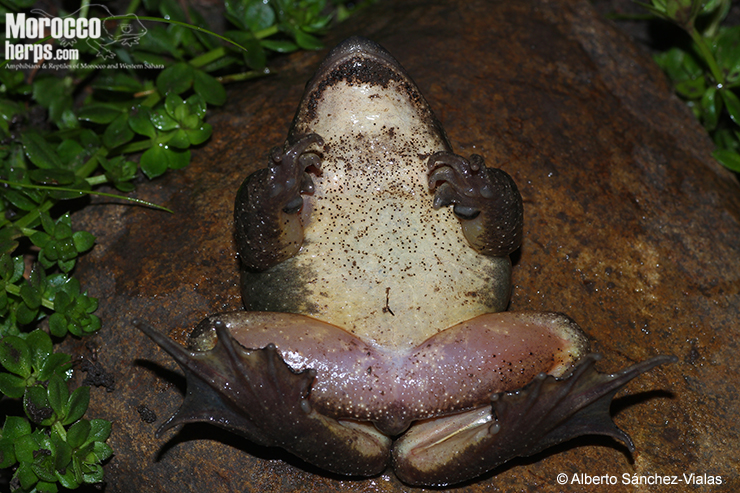
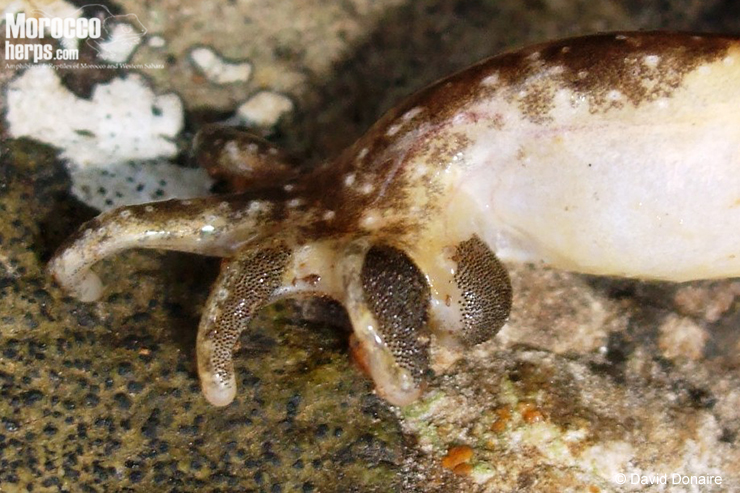
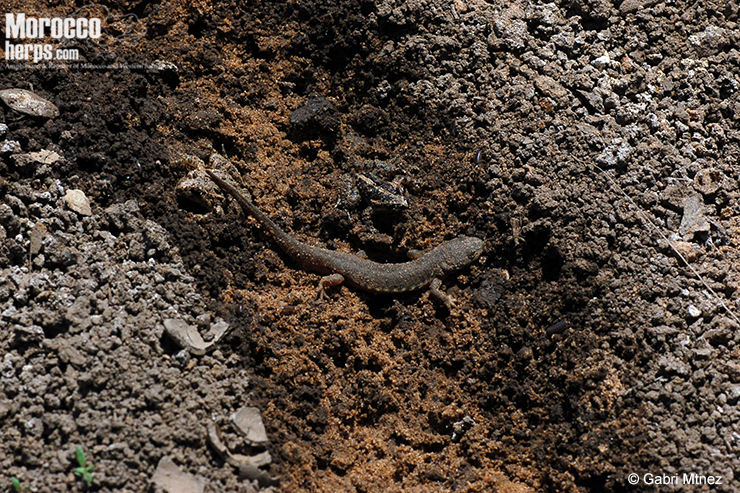
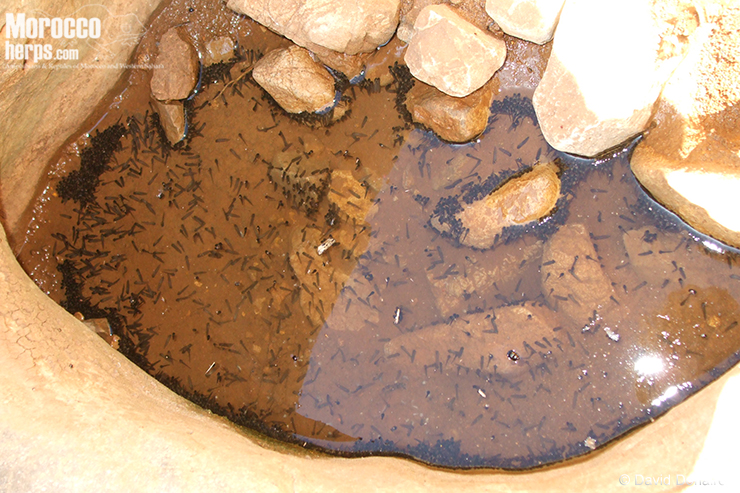
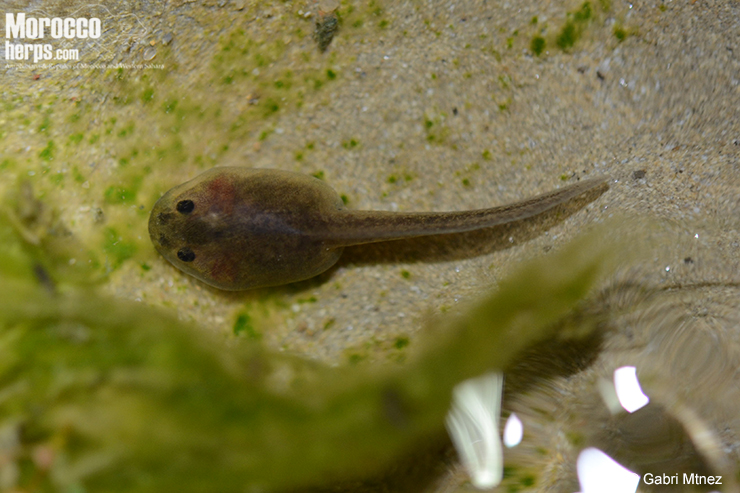
They feed mostly on invertebrates and are preyed by Natrix maura.
In Kenitra we have observed many individuals of the bird Bubulcus ibis hunting in the shore of temporal lagoon where several juvenile of Discoglossus scovazzi were found. Tadpoles are preyed upon by Pleurodeles waltl (Escoriza & Ben Hassine, 2019) and likely by Salamandra algira larvae.
4) Distribution, habitat and abundance
This species is considered an endemic of Morocco and the Spanish territory of Ceuta (Vences et al., 2014). The encroachment to the west of the Moulouya River by D. pictus indicates that D. scovazzi does not exist in Algeria. Any Algerian record of Discoglossus should be classified as D. pictus.
It has a wide distribution in Morocco with the following boundaries: in the east, the Moulouya Basin is the limit between this species and D. pictus. However, the latter enters west of the Moulouya River along the Mediterranean Coast at least until Melilla and Nador, although the two species might occur sympatrically at some sites within this region. A more detailed sampling should be made in that area according to Vences and collaborators (2014). In the South, the High Atlas is the limit of their range except where it meets the Atlantic Coast. The species has been recorded several times in the Souss Valley and once in the Oued Draa (F. Cuzin in Bons & Geniez 1996). The latter was considered doubtful by Bons & Geniez (1996) possibly due to the great distance to the rest of populations. The recent finding of Discoglossus at Oued Noun, several kilometers north of Oued Draa (García-Cardenete et al., 2019), revalidates that record, showing that the possible southwest limit for the genus Discoglossus could be the Oued Draa at least until 1992.
This species is adapted to almost all the aquatic habitats of Morocco up to 2.724 m in the high Atlas: From temporary ponds in the coastal dunes and forest, rivers, small mountain streams (Martínez del Mármol et al., 2019). It is one of the most common amphibians in water sources around human areas and is present in flooded road ditches and cattle tracks filled with water…
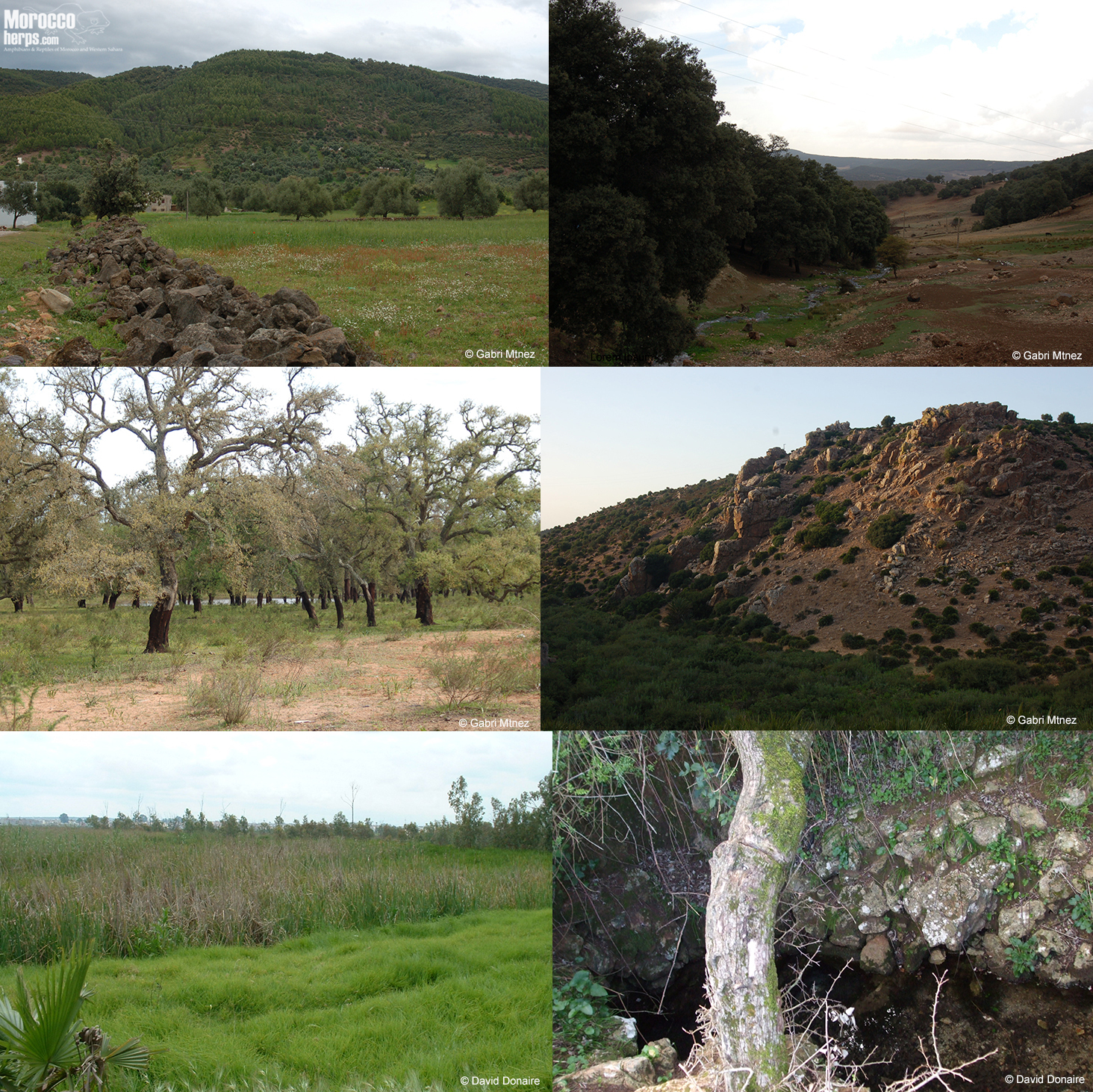
The Moroccan Painted Frog is one of the most common amphibians of North Morocco. Despite being affected by habitat destruction, it is one of the few species of Moroccan amphibians that can adapt quickly to habitat changes. For example, we have found it several times in intensive agriculture fields between Fes and Karia Ba Mohamed (León Vigara R, Izagirre A, Vázquez Graña R, Martínez del Mármol G, unp. data). Mateo and collaborators (2003) cited the salinization of lagoons as one of the main threats. It is frequently killed by traffic on roads on rainy nights and it has been found trapped several times in human structures such as pits, storm drains, wells, water channels and cisterns (Bab Taza, Kenitra, Ben Slimane, Fes, Taroudant; unp. data). It can carry the Chytrid fungus Batrachochytrium dendrobatidis (El Mouden et al., 2011). Apart from these threats, it continues to be very abundant so is considered by the IUCN as Least Concern (Salvador et al., 2008).
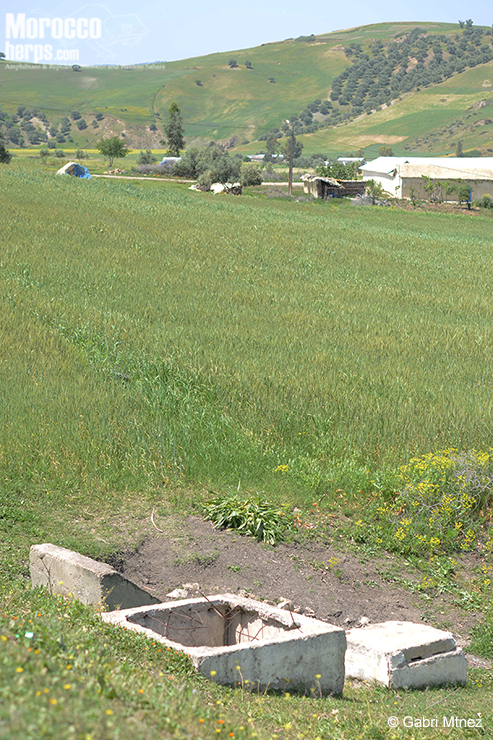
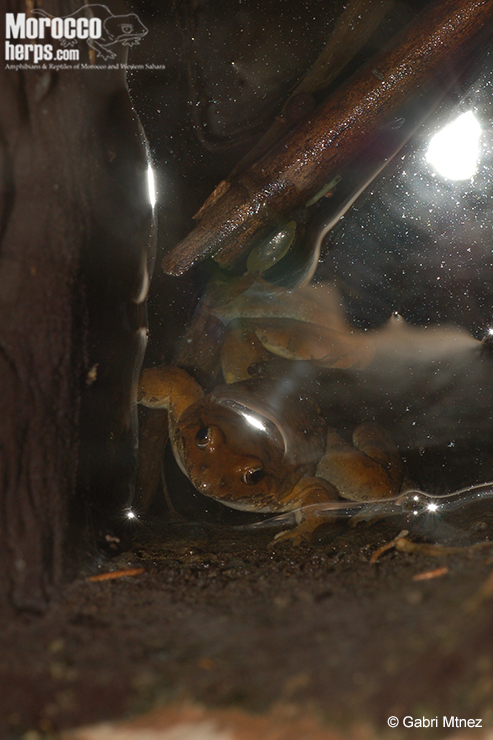
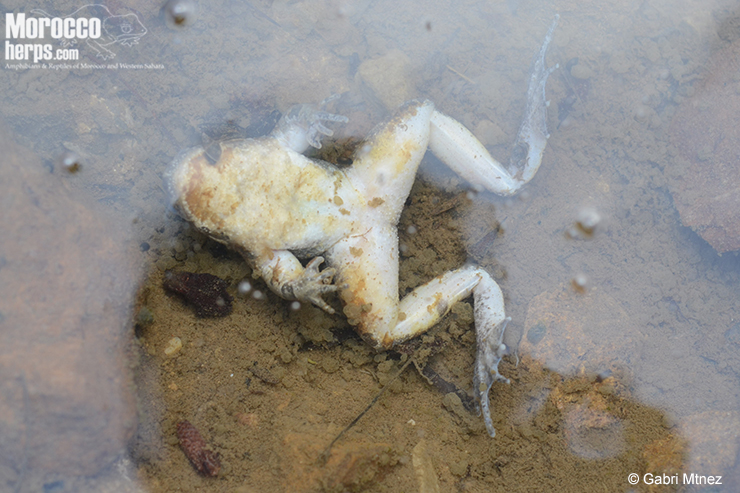
Ackowledgements
Thanks to Alberto Sánchez-Vialas for the permission to use his photos and information.
Bibliography
- Beukema W, de Pous P, Donaire-Barroso D, Bogaerts S, García-Porta J, Escoriza D, Arribas OJ, El Mouden EH and Carranza S. 2013. Review of the systematics, distribution, biogeography and natural history of Moroccan amphibians. Zootaxa 3661: 1-60.
- Biton R, Geffen E, Vences M, Cohen O, Bailon S, Rabinovich R, Malka Y, Oron T, Boistel R, Brumfeld V and Gafny S. 2013. The rediscovered Hula painted frog is a living fossil. Nature short Communications 4: 1-6.
- Bons J and Geniez P. 1996. Amphibiens et reptiles du Maroc (Sahara Occidental compris). Atlas Biogéographique. Asociación Herpetológica Española, Barcelona, Spain. 319 pp.
- Boulenger GA. 1891. Catalogue of the reptiles and batrachians of Barbary (Morocco, Algeria, Tunisia), based chiefly upon the notes and collections made in 1880-1884 by M. Fernand Lataste. Tr. Zool. Soc. 13: 93-164.
- El Mouden EH, Slimani T, Donaire D, Fernández-Beaskoetxea S, Fisher MC and Bosch J. 2011. First record of the chytrid fungus Batrachochytrium dendrobatidis in North Africa. Herpetological Review 42: 71-75.
- Escoriza D. 2015. Discoglossus pictus Otth, 1837. En: Martínez, G., León, R., Jiménez-Robles, O., González De la Vega, J. P., Gabari, V., Rebollo, B., Sánchez-Tójar, A., Fernández-Cardenete, J. R., Gállego, J. (Eds.). Moroccoherps. Anfibios y Reptiles de Marruecos y Sahara Occidental. Disponible en www.moroccoherps.com/ficha/Discoglossus_pictus/ Versión 11/01/2015.
- Escoriza D and Ben Hassine J. 2019. Amphibians of North Africa. Academic Press, London, 350 pp.
- García-Cardenete L, Flores MV, Yubero S and Rodríguez EJ. 2019. Oued Noun (Morocco). Southwest limit for the genus Discoglossus. Boletín de la Asociación Herpetológica Española 30 (2): 113-115.
- Lanza B, Nascetti G, Capula M and Bullini L. 1986. Les discoglosses de la région méditerranéenne occidentale. Bull. Soc. Herp. Fr. 40: 16-27.
- Martínez del Mármol G, Harris DJ, Geniez P, de Pous P and Salvi D. 2019. Amphibians and Reptiles of Morocco. Frankfurt, Germany, Edition Chimaira. 478 pp.
- Martínez-Solano I. 2004. Phylogeography of Iberian Discoglossus (Anura: Discoglossidae). J. Zool. Syst.Evol. Res. 42: 298-305.
- Mateo JA, Pleguezuelos JM, Fahd S, Geniez P and Martínez-Medina FJ. 2003. Los Anfibios, los Reptiles y el Estrecho de Gibralter. Un ensayo sobre la Herpetofauna de Ceuta y su entorno. Instituto de Estudios Ceuties, Ceuta. 388 pp.
- Salvador A, Donaire-Barroso D, Slimani T, El Mouden H, Geniez P, Perez-Mellado V and Martínez-Solano I. 2008. Discoglossus scovazzi. In: IUCN 2010. IUCN Red List of Threatened Species. Version 2010.4. <www.iucnredlist.org>. Downloaded on 27 February 2011.
- Schleich HH, Kästle W and Kabisch K. 1996. Amphibians and Reptiles of North Africa. Koeltz scientific books, Koenigstein. 630 pp.
- Vences M, de Pous P, Nicolas V, Díaz-Rodríguez J, Donaire D, Hugemann K, Hauswaldt JS, Amat F, Barnestein JAM, Bogaerts S, Bouazza A, Carranza S, Galán P, González de la Vega JP, Joger U, Lansari A, El Mouden EH, Ohler A, Sanuy D, Slimani T and Tejedo M. 2014. New insights on phylogeography and distribution of painted frogs (Discoglossus) in northern Africa and the Iberian Peninsula Amphibia-Reptilia 35: 305-320.
To cite this page:
Martínez del Mármol G & Donaire-Barroso D (2020): Discoglossus scovazzi Camerano 1878. En: Martínez, G., León, R., Jiménez-Robles, O., González De la Vega, J. P., Gabari, V., Rebollo, B., Sánchez-Tójar, A., Fernández-Cardenete, J. R., Gállego, J. (Eds.). Moroccoherps. Anfibios y Reptiles de Marruecos y Sahara Occidental. Disponible en www.moroccoherps.com/ficha/discoglossus_scovazzi/. Versión 1/11/2020.
To cite www.morocoherps.com en as a whole:
Martínez, G., León, R., Jiménez-Robles, O., González De la Vega, J.P., Gabari, V., Rebollo, B., Sánchez-Tójar, A., Fernández-Cardenete, J.R., Gállego, J. (Eds.). Moroccoherps. Amphibians and Reptiles of Morocco and Western Sahara. Available from www.moroccoherps.com.
